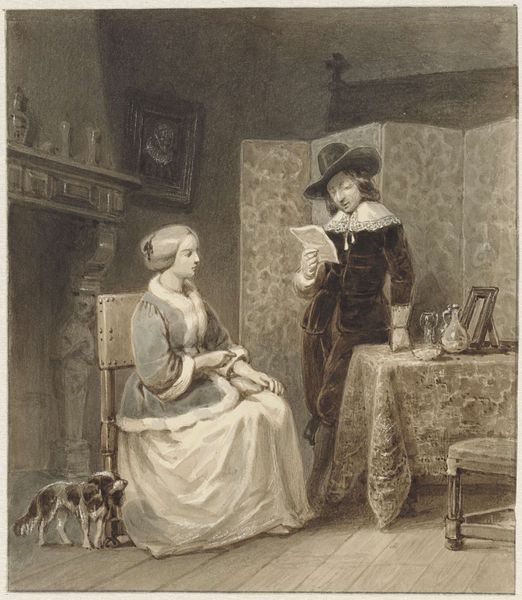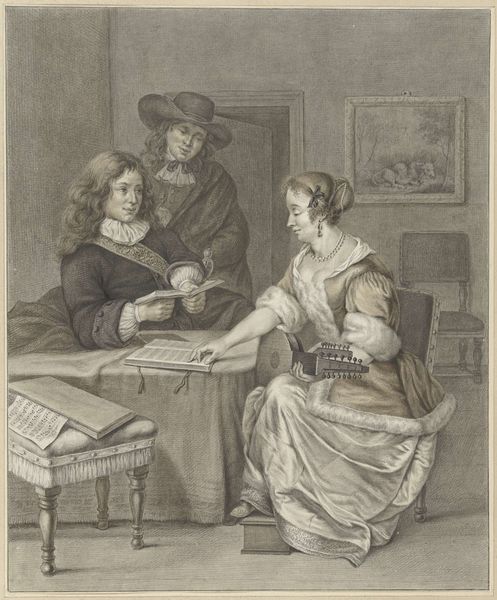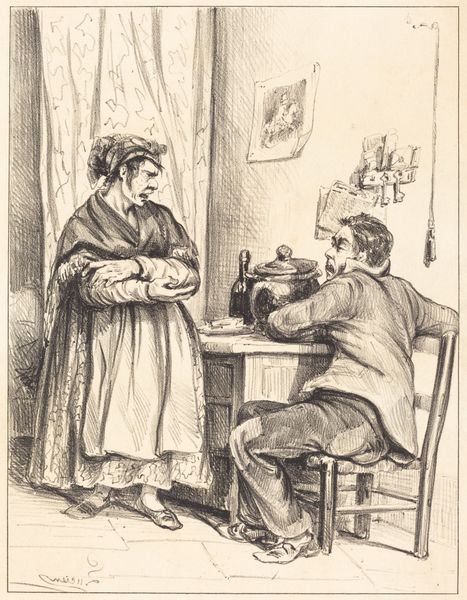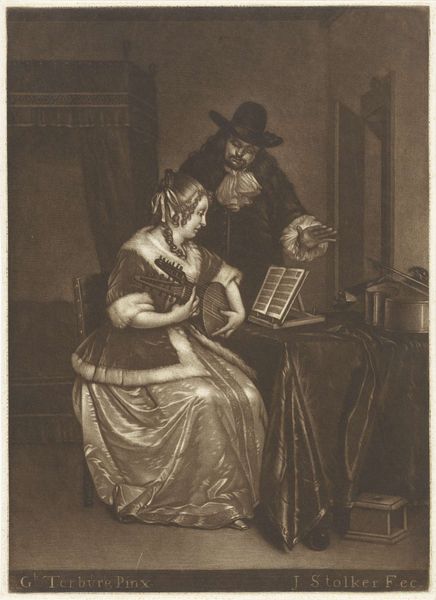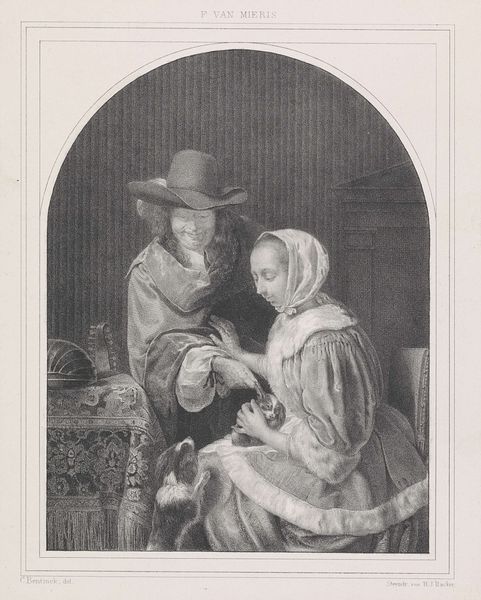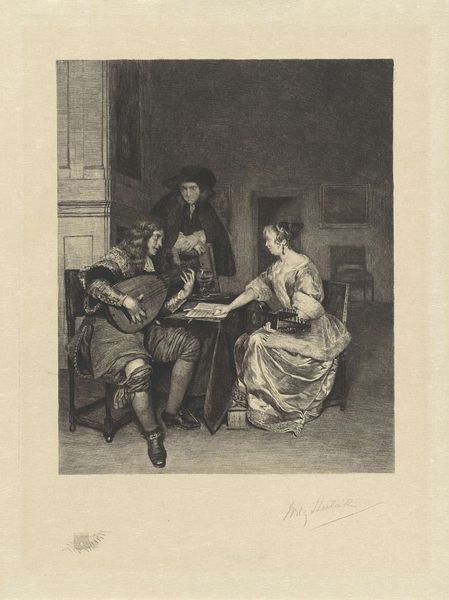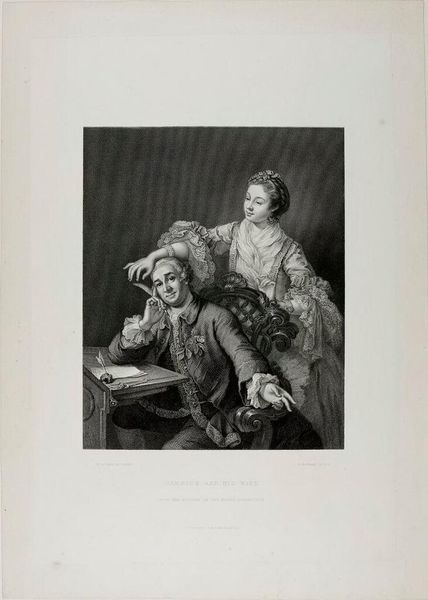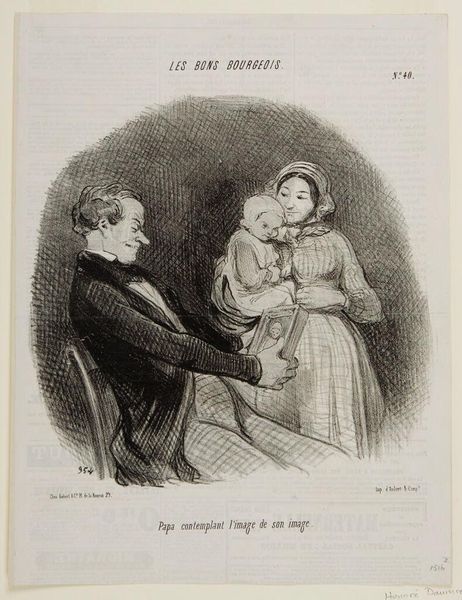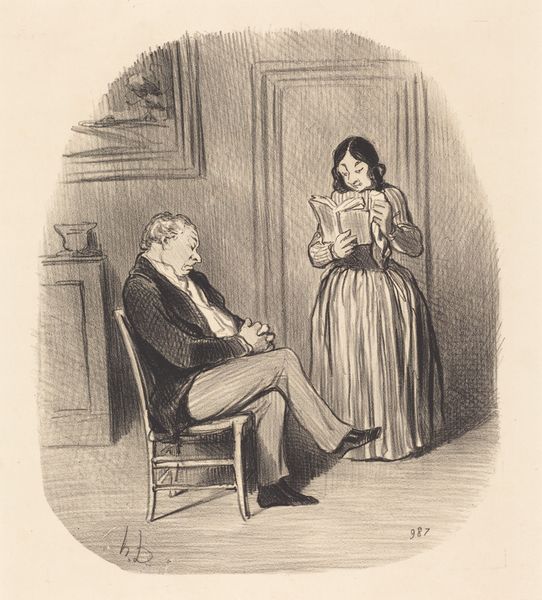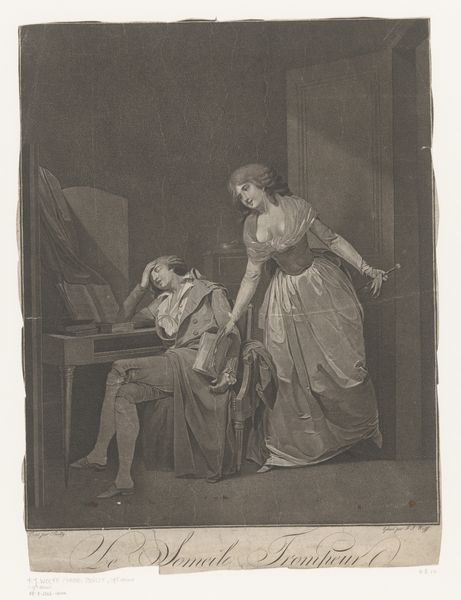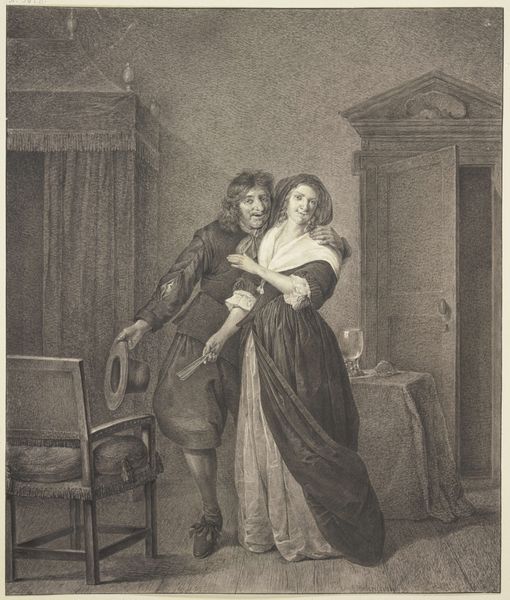
painting
#
portrait
#
baroque
#
dutch-golden-age
#
painting
#
monochrome photography
#
genre-painting
#
monochrome
#
monochrome
Dimensions: 52 cm (height) x 39 cm (width) (Netto)
Curator: Here we have a painting called "Domestic Scenery," created sometime between 1632 and 1745 by an anonymous artist and held at the SMK, the Statens Museum for Kunst. Editor: Immediately striking. It’s almost ghostly in its monochrome, or perhaps it’s simply age—though that effect lends a sense of melancholy. You've a man, traveler maybe, confronting a woman seated with a letter. Curator: That touch of melancholy likely reflects the social realities embedded in Dutch genre painting of this era, when representations of everyday life often masked underlying tensions, particularly within domestic spheres. Editor: The details feel significant. Look at the textures; her fur-trimmed robe, the man’s simple attire, all meticulously captured. Is this an oil painting or a charcoal sketch? I'm trying to determine its creation and the level of detail is surprising considering it. Curator: Oil on canvas, a common medium of the Dutch Golden Age allowing for intricate details and lasting color depth despite the limited palette on display here. This piece likely mirrored some social hierarchy. Her clothes signify comfort while he travels, the physical implications. Editor: A material difference mirroring their roles, certainly. It evokes thoughts about gendered labor; the world of interior vs. exterior, woman as muse. It all touches on how those concepts, those boundaries were, and continue to be constructed. Curator: And consider the absence of identifiable features, given its anonymous origins. It enhances the narrative's universality, transforming it into a comment on class, maybe some familial relations, relevant in its time but transcending those circumstances across centuries. Editor: An interesting point. Removing the specific allows for the general to stand in. This makes the materiality all the more prominent: pigment applied with precision to cheap or costly textiles which clothe these people. Each brushstroke carries social baggage. Curator: Exactly! That combination makes "Domestic Scenery" quite compelling. By leaving authorship undefined it speaks clearly about the social textures and tensions of a long-gone time but retains resonance today. Editor: Well, exploring those social echoes in tangible forms allows for historical interrogation, and there's an aspect I really find rewarding and something that will remain with me.
Comments
No comments
Be the first to comment and join the conversation on the ultimate creative platform.
